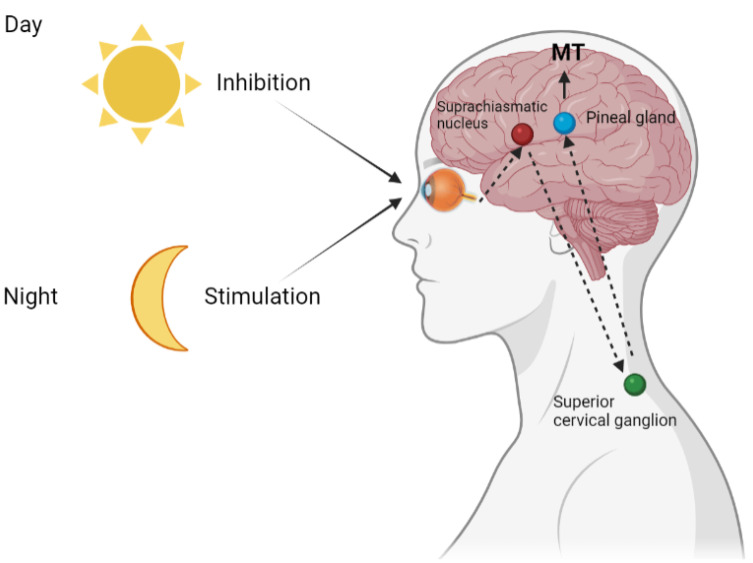Figure 2.
Melatonin is the main regulator of the circadian rhythm in all living organisms. Light information from the rods and cones of the retina through the ganglion cells and directly from the light-sensitive ganglion cells enters the paired suprachiasmatic nucleus (SCN) of the hypothalamus. These signals then travel to the cervical spinal cord, from where they travel back to the brain and reach the pineal gland. During sleep in the dark, when most of the SCN neurons are inactive, the nerve endings release norepinephrine, which activates the synthesis of melatonin in the pinealocytes. Bright light blocks the synthesis, while in constant darkness, the rhythmic production, maintained by the periodic activity of the SCN, is preserved.

